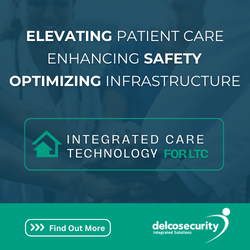Earlier this week the Ministry of Health held the BC Summit to Prevent Workplace Violence in Health Care. Jennifer Lyle, Executive Director at SafeCare BC attended as part of a select group of invited participants. Catch a full recap from SafeCare BC below, or visit www.safecarebc.ca.
+++

The issue of workplace violence in health care has been an ongoing and increasingly pressing issue. Although representing approximately 11% of BC’s workforce, the health care sector accounts for 56% of all violence-related workplace injury claims, according to WorkSafeBC data. The impact of workplace violence is far-reaching, affecting staff recruitment and retention, injury claim costs, staffing shortages, and quality of client care. Although all stakeholders involved agree that workplace violence must be addressed, determining how to do so has proven to be much more difficult. In an effort to spur dialogue and identify key actions that could be undertaken over the next year, the Ministry of Health hosted the Summit to Prevent Workplace Violence in Health Care on April 7th. Jennifer Lyle, Executive Director at SafeCare BC attended as part of a select group of invited participants.
Summit Draws Key Industry Stakeholders
The Summit drew attendees from a variety of backgrounds, including organized labour, professional associations, the Health Authorities, HEABC, UBC, WorkSafeBC, and SafeCare BC. Health Minister Terry Lake addressed the packed audience, highlighting the Ministry of Health’s focus on a triple-aim system with a unique BC addition: to enhance the patient experience of care, to improve public health, to ensure value for dollar, and to enhance the experience of those working in the sector. It was the last piece that was central to the discussion of the day: what can be done to address workplace violence to create a safer, therapeutic environment for both the client and the health care worker?  The core subject matter, violence in health care, is challenging and multi-faceted in its root causes. The event featured a series of speakers, question-and-answer periods, and roundtable dialogue. The issue of workplace violence was tackled from a number of different care perspectives: forensic psychiatry, residential care, mental health and addictions, acute care, and medicine and emergency. Presenters drew from a variety of backgrounds, including frontline staff, clinicians, labour, and occupational health and safety.
The core subject matter, violence in health care, is challenging and multi-faceted in its root causes. The event featured a series of speakers, question-and-answer periods, and roundtable dialogue. The issue of workplace violence was tackled from a number of different care perspectives: forensic psychiatry, residential care, mental health and addictions, acute care, and medicine and emergency. Presenters drew from a variety of backgrounds, including frontline staff, clinicians, labour, and occupational health and safety.
Key Themes of the Discussion:
- Increasing prevalence of clients with dementia, which in turn presents unique challenges to front line staff who interact with these clients.
- The importance of good, multidisciplinary communication to ensure all members of the health care team (including non-direct care staff) are informed and safe.
- Lack of good quality data on the actual number of violent incidents in health care. It was noted that the only provincial data readily available is WorkSafeBC data, which is limited to WorkSafeBC claims.
- Impact of staffing models and staff training on safety in the workplace. Several presenters highlighted the importance of consistent staffing to enable teams to develop a cohesive dynamic and learn about their clients.
- Importance of ensuring staff are educated on safe work practices, and that organizations have policies in place to support and reinforce that learning.
- Collaboration between management, front line staff, and clients (or their decision-makers) being key to success of any violence prevention initiative.
- Ensuring that changes in clinical practice are analyzed from a staff safety as well as a patient safety perspective.
“It’s apparent that many areas of health care are grappling with a lot of the same issues as the continuing care sector. Regardless of what sector you work in, we’re all seeing an increasingly elderly clientele where the prevalence of dementia is higher. We’re seeing the importance of teamwork in addressing the issue of violence in health care, and we’re seeing the same challenges in ensuring strong communication, consistency in treatment approach, and staff awareness of safe work practices,” says Jennifer Lyle, Executive Director at SafeCare BC. The Summit wrapped up with a roundtable discussion whereby each table was invited to identify three key areas for action over the next year. As part of the discussion, which SafeCare BC took part, the following three areas were identified:
- If additional safety standards are to be brought in (e.g. CSA Z1000), they should be integrated into existing standards instead of adopted as stand-alone items to minimize redundancy and compliance burden.
- An effort should be made at the provincial level to establish clear guidelines on identifying and communicating potential violence risks with regards to clients.
- Different models should be explored to increase access to the existing Provincial Violence Prevention Curriculum to non-Health Authority employees and to students enrolled in post-secondary health care programs.
Ministry Welcomes a Continuing Dialogue

Although the larger group did not have the opportunity to reconvene after the roundtable sessions, Deputy Minister Stephen Brown indicated that the Ministry of Health would collect the feedback and circulate the compiled list to the attendees within the next three weeks. Attendees were encouraged to provide additional feedback to Ministry staff directly after the event if there were any other items that were not covered during the roundtable sessions. The core purpose of the Summit was to inspire dialogue. In that sense, it achieved its objective. The Summit successfully brought together a group of stakeholders that has, at times, had a fractious relationship. Although constrained by time and the complexity of the subject matter, the dialogue from that session has the potential to lay important groundwork for change. “It’s a multi-faceted and complex issue,” says Lyle, “and it would be unrealistic to expect that a one-time event would be sufficient to design a solution to this problem. It is, however, a great start and it was encouraging to see the dialogue that came of it.” The Ministry of Health has expressed dedication to action over the next year. SafeCare BC remains cautiously optimistic that the day’s discussions will be converted into real, concrete support at the Ministry level for violence prevention initiatives for those working in BC’s continuing care sector. Read more about the Summit to Prevent Workplace Violence in Health Care at www.VancouverSun.com.
Stay Tuned For Upcoming Violence Prevention Workshops
SafeCare BC will be hosting additional Violence Prevention Workshops in the coming months. The last metro Vancouver workshop sold out in under 24 hours, so stay tuned for announcements and register quick! Visit our course listings page for other workshops.






